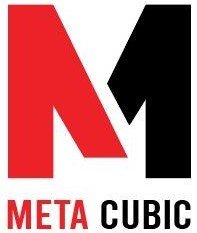Migrating a Database in Laravel
Step-by-Step Tutorial
In this step-by-step tutorial, we will guide you through the process of migrating a database in Laravel. Laravel is a popular PHP framework that provides a convenient way to interact with databases. Migrating a database involves creating and modifying database tables, allowing you to manage your database schema efficiently. We will cover the essential steps required to perform a successful database migration in Laravel.
What is Database Migration?
Database migration is a process of managing database schema changes over time. It allows you to create, modify, and delete database tables and columns, making it easier to maintain and update your database structure. Laravel provides a powerful migration system that simplifies the process of migrating databases.
Setting up Laravel
Before we begin migrating the database, let’s make sure we have Laravel properly set up. Follow these steps to get started:
- Install Laravel using Composer.
- Configure your database connection in the
.envfile. - Run the migration setup command:
php artisan migrate:install.
Creating Migration Files
To create a migration file, use the make:migration command provided by Laravel’s Artisan CLI. This command generates a new migration file in the database/migrations directory. Each migration file represents a set of changes to be applied to the database.
Defining Database Schema
Open the migration file created in the previous step. The migration file contains two methods: up() and down(). The up() method defines the actions to be performed when running the migration, such as creating tables and adding columns. The down() method specifies how to revert the changes made by the migration.
Within the up() method, you can use Laravel’s Schema builder to define the database schema. You can create tables, add columns, define indexes, and set foreign key constraints. Laravel provides a fluent API for these operations, allowing you to express the schema in a clean and readable way.
Running Migrations
To run the migrations and apply the changes to the database, use the migrate command provided by Laravel’s Artisan CLI. This command executes all pending migrations in the order they were created.
By default, Laravel keeps track of which migrations have been run, so you can safely run the migrations multiple times without causing conflicts. Only the pending migrations will be executed.
Rollbacks and Resetting Migrations
If you need to rollback a migration or reset the entire migration process, Laravel provides convenient commands for these tasks.
To rollback the last batch of migrations, use the migrate:rollback command. This command reverts the latest set of migrations.
To rollback all migrations and start fresh, use the migrate:reset command. This command removes all migration entries from the database.
Modifying Existing Migrations
Sometimes, you may need to modify an existing migration file after it has been run. However, you should avoid modifying a migration that has already been executed in a production environment. Instead, create a new migration to handle the required changes.
To create a new migration, use the make:migration command as before. Laravel will generate a new migration file with a timestamp, ensuring its execution order.
Seeding the Database
Database seeding allows you to populate your database with sample data for testing purposes or to provide initial data for your application. Laravel provides a straightforward way to seed the database using seed classes.
To create a new seed class, use the make:seeder command. This command generates a new seed class in the database/seeders directory. You can then define the data to be inserted within the run() method of the seed class.
To run the seeders and populate the database, use the db:seed command. This command executes all seed classes defined in the DatabaseSeeder class.







